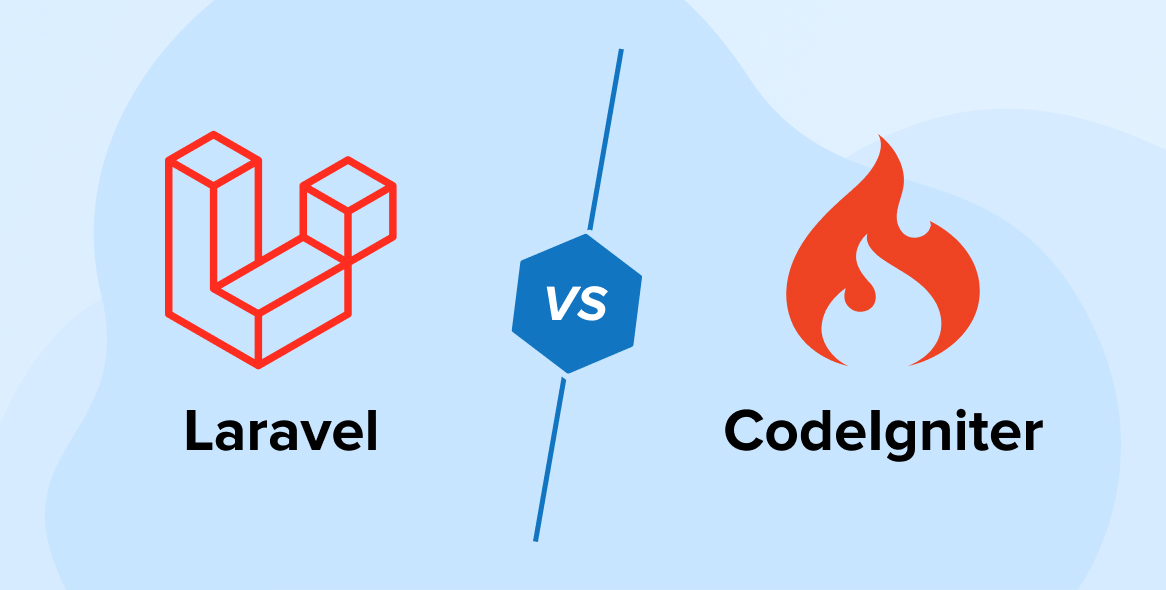CodeIgniter 4 vs Laravel 12: “Lightweight Speedster vs Feature-Rich Powerhouse

Choosing the right PHP framework isn’t just about syntax — it’s about matching the tool to your project’s size, complexity, and long-term goals. CodeIgniter 4 and Laravel 12 represent two different philosophies in modern PHP development: one built for speed and simplicity, the other for scalability and rich features.
CodeIgniter 4: The Lightweight Speedster
Overview:
CodeIgniter 4 is designed for developers who value performance, simplicity, and minimal setup. With a small footprint and quick learning curve, it’s ideal for rapid prototyping or small-to-medium projects.
Key Strengths:
- Lightning-fast performance with minimal overhead
- Clean MVC structure
- Excellent for hosting on shared servers or low-resource environments
- Straightforward configuration and easy to deploy
Real-World Use Cases:
- 🛒 Small E-commerce Platforms – Local businesses that need fast-loading online stores without complex features.
- 📊 Internal Tools or Dashboards – Lightweight internal management systems, HR dashboards, or reporting tools.
- 📰 Content-Driven Websites – News portals or blogs that prioritize speed and uptime.
- 🏫 Educational Portals – College project systems or learning management tools with simple authentication.
- ⚙️ API Backends for Mobile Apps – Quick REST APIs for mobile or IoT projects that don’t need heavy middleware.
Example in Practice:
Companies like Bufferapp (early prototypes) and many small-to-mid digital agencies have used CodeIgniter to deliver MVPs quickly before migrating to heavier frameworks when scale demands it.
Laravel 12: The Feature-Rich Powerhouse
Overview:
Laravel 12 is engineered for developers building large, maintainable, and scalable applications. It integrates seamlessly with modern front-end tools (React, Vue, Livewire) and includes features like queueing, broadcasting, caching, and a robust ORM (Eloquent).
Key Strengths:
- Rich ecosystem (Horizon, Breeze, Jetstream, Nova)
- Built-in support for API versioning and modular architecture
- Scalable queue and caching systems
- Powerful Blade templating and middleware flexibility
- Vast community and third-party package support
Real-World Use Cases:
- 🧾 Enterprise-Level Applications – Complex CRMs, ERPs, and financial platforms.
- 📱 Full-Stack Web Apps – SaaS platforms with integrated APIs, real-time updates, and user dashboards.
- 🏢 Corporate Portals and Intranets – Secure systems requiring role-based authentication and multi-tenant management.
- 🎯 E-Commerce Giants – Scalable online stores with advanced features like order tracking, analytics, and dynamic content.
- 🌍 Community Platforms – Forums, job boards, or social platforms that require scalability and modular structure.
Example in Practice:
Large platforms like Invoice Ninja, Barchart, and Laracasts use Laravel to deliver complex, user-intensive applications with rich functionality and modern UX.
Comparison Summary
| Feature / Area | CodeIgniter 4 | Laravel 12 |
| Performance | Blazing fast, minimal footprint | Optimized with caching and queues |
| Complexity Handling | Simple to moderate | Excellent for complex business logic |
| Learning Curve | Easy for beginners | Steeper but more powerful |
| Ecosystem & Tools | Lightweight | Vast (Jetstream, Nova, Horizon, etc.) |
| Use Case Fit | Small/medium apps, MVPs | Enterprise, SaaS, eCommerce, APIs |
| Deployment | Quick setup, shared hosting friendly | Needs modern hosting or cloud setup |
Final Verdict
- Choose CodeIgniter 4 if you need speed, simplicity, and a framework that “just works” for smaller or medium-scale applications.
- Choose Laravel 12 if you’re building feature-rich, scalable applications that demand structure, modularity, and long-term maintainability.
In short:
CodeIgniter 4 = Speed + Simplicity.
Laravel 12 = Power + Productivity.